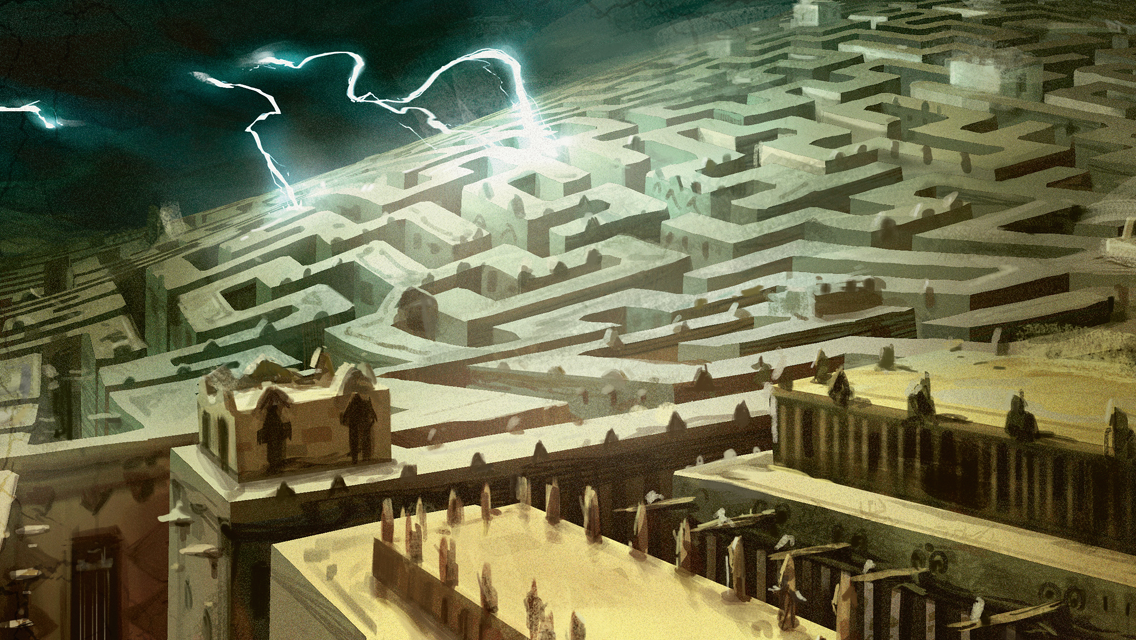The idea of recursive best first search is to simulate A* search with \(O(bd)\) memory, where \(b\) is the branching factor and \(d\) is the solution depth. 1
g
1
h
function RECURSIVE-BEST-FIRST-SEARCH(problem) returns a solution, or failure
return RBFS(problem, MAKE-NODE(problem.INITIAL-STATE), INFINITY)
function RBFS(problem, node, f_limit) returns a solution, or failure and a new f-cost limit
if problem.GOAL-TEST(node.STATE) then
return SOLUTION(node)
successors <- [ ]
for each action in problem.ACTIONS(node.STATE) do
add CHILD-NODE(problem,node,action) into successors
if successors is empty then
return failure, INFINITY
/* update f with value from previous search, if any */
for each s in successors do
s.f <- max(s.g + s.h, node.f))
loop do
best <- the lowest f-value node in successors
if best.f > f_limit then
return failure, best.f
alternative <- the second-lowest f-value among successors
result, best.f <- RBFS(problem, best, min(f_limit, alternative))
if result != failure then
return resultThink of 1
node.f
1
bot_node.g + bot_node.h
1
bot_node
1
node
The part that perplexed me the most is,
/* update f with value from previous search, if any */
for each s in successors do
s.f <- max(s.g + s.h, node.f)If we visit 1
node
1
RBFS(p_node)
1
RBFS(node)
1
failure, new_f
1
f
1
p_node.successors
1
RBFS
1
min(f_limit, alternative)
1
node
1
RBFS(p_node)
If it has already expanded 1
node
1
failure, node.f = new_f
1
node
1
f = node.f
1
child_node
1
node
1
f = node.f
1
child_node
1
child_node.g + child_node.h
1
new_f
1
f
1
node.f
With consistent heuristic, the instruction is perfectly fine sine each path has non-decreasing f-values and thus 1
child_node.f
1
node.f
1
RBFS(node)
1
node
1
node.f = f.g + f.h
1
max
1
child_node
1
f
1
g + h
